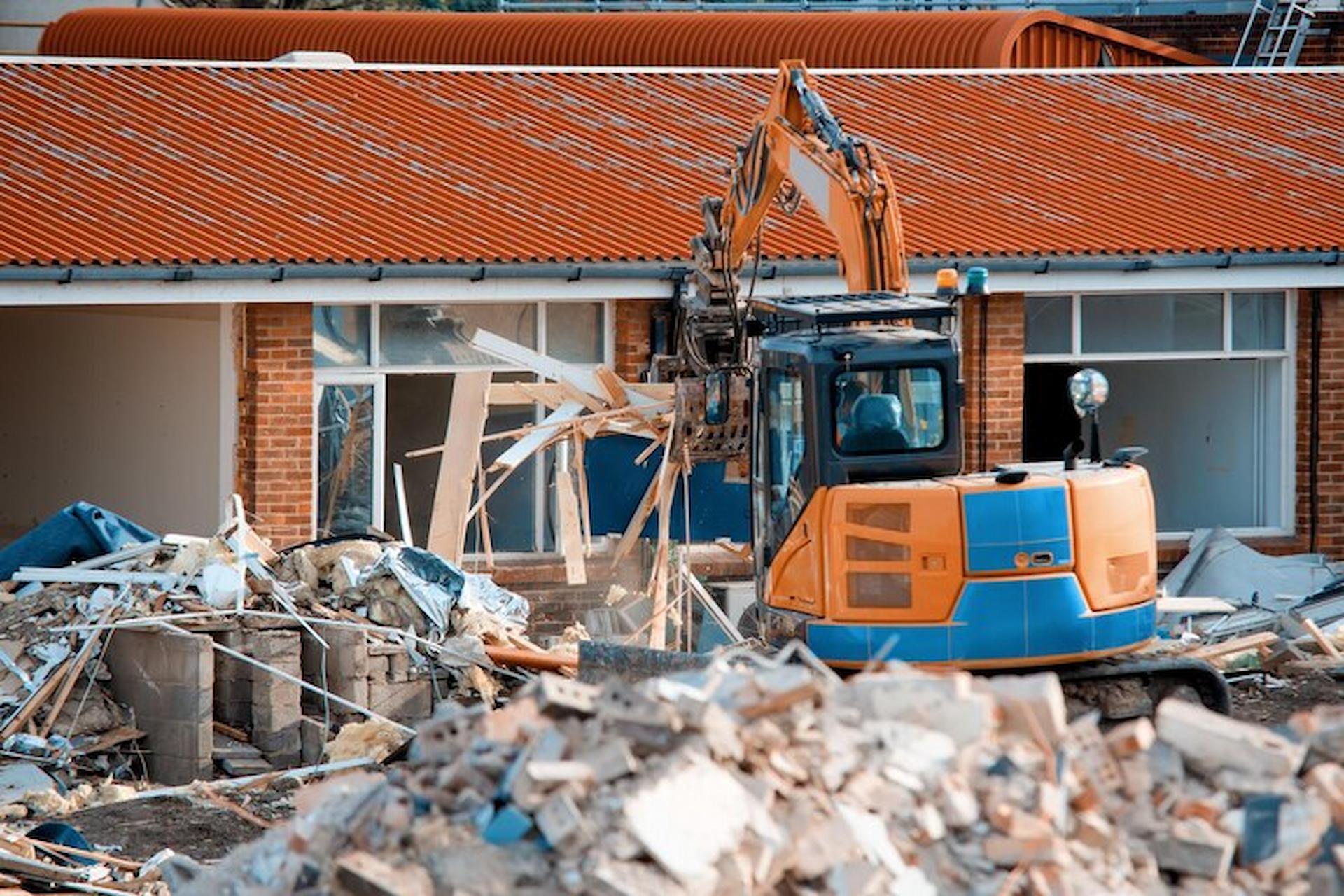
Demolition services play a crucial role in various construction and redevelopment projects. Whether demolishing old structures to make way for new ones or clearing sites for urban renewal, successful demolition requires the right equipment. From wrecking balls to hydraulic excavators, each tool serves a specific purpose in ensuring efficient and safe demolition. This article will explore the essential equipment required for successful demolition projects, highlighting their functionalities and importance.
Demolition Equipment Essentials
Hydraulic Excavators
Hydraulic excavators are the workhorses of demolition projects. These versatile machines can efficiently dismantle structures of all sizes and are equipped with robust hydraulic systems and attachments such as shears and grapples. Their ability to reach high places and manoeuvre in tight spaces makes them indispensable for precision demolition tasks.
Wrecking Balls
Wrecking balls are iconic symbols of demolition and for a good reason. These massive steel balls, suspended from cranes, are used to smash through concrete and masonry structures, making them indispensable tools in the arsenal of demolition services. While they may seem rudimentary compared to modern machinery, wrecking balls are still effective for bringing down large sections of buildings in a controlled manner.
Concrete Crushers
Concrete crushers are essential for breaking down concrete structures into manageable pieces. These machines use powerful jaws or hammers to pulverise concrete, allowing for easy removal and recycling. Concrete crushers are particularly useful for demolishing foundations, slabs, and retaining walls.
Hydraulic Breakers
Hydraulic breakers, or jackhammers, are indispensable for demolishing concrete and rock. Mounted on excavators or skid-steer loaders, these pneumatic tools deliver rapid blows to break apart tough materials. Hydraulic breakers are ideal for selective demolition tasks where precision and efficiency are paramount.
Skid-Steer Loaders
Skid-steer loaders are compact yet versatile machines commonly used in demolition projects. With their small footprint and manoeuvrability, skid-steer loaders can access tight spaces and perform various tasks, including debris removal, grading, and site cleanup. Equipped with attachments such as buckets and grapples, these machines are indispensable for maintaining a clean and organised work site.
Dump Trucks
Dump trucks are crucial in hauling debris and waste materials from demolition sites. These heavy-duty vehicles come in various sizes and configurations, allowing for efficient transportation of rubble to recycling facilities or landfills. With their large capacity and rugged construction, dump trucks ensure timely demolition debris removal, keeping the project on schedule.
Demolition Robots
In recent years, demolition robots have emerged as valuable assets in the demolition industry. These remote-controlled machines have specialised attachments such as crushers, shears, and hammers, allowing them to perform precise demolition tasks in confined spaces or hazardous environments. Demolition robots offer enhanced safety for operators by keeping them at a safe distance from potential hazards while maintaining high productivity levels.
Diamond Wire Saws
Diamond wire saws are used for cutting through heavily reinforced concrete and other tough materials during demolition projects. Fitted with diamond-embedded wires, these saws can slice through thick concrete walls and columns precisely and easily. They are particularly useful for projects where traditional methods are impractical or too time-consuming.
High-Reach Excavators
High-reach excavators, also known as demolition excavators, are specially designed for reaching tall structures and demolishing them from the top down. Equipped with extended booms and specialised attachments, such as demolition shears or pulverisers, high-reach excavators can safely dismantle multi-story buildings while minimising the risk of collapse. These machines are essential for urban demolition projects where space constraints and safety considerations are paramount.
Dust Suppression Equipment
Dust suppression equipment controls airborne dust and debris generated during demolition activities. Measures such as water sprayers, mist cannons, and dust collectors help mitigate dust exposure’s health and environmental risks. By keeping dust levels within acceptable limits, dust suppression equipment ensures a safer and more comfortable working environment for demolition crews and nearby residents.
Protective Barriers and Fencing
Protective barriers and fencing are crucial for securing demolition sites and preventing unauthorised access. Erecting sturdy obstacles around the site’s perimeter helps safeguard pedestrians, neighbouring properties, and workers from potential hazards such as falling debris and heavy equipment. Additionally, signage and warning lights should be installed to alert passersby of the ongoing demolition activities and ensure their safety.
Conclusion
The success of demolition projects relies heavily on properly utilising a wide range of equipment and tools. From hydraulic excavators and wrecking balls to demolition robots and diamond wire saws, each piece of equipment serves a specific purpose in safely and efficiently dismantling structures. By investing in the right equipment and adhering to strict safety protocols, demolition contractors can ensure that their projects are completed on time, within budget, and without compromising the safety of workers and the surrounding environment.
Read more: https://www.hereby.co.uk/follow-these-steps-to-ensure-proper-safety-for-your-construction-site/
